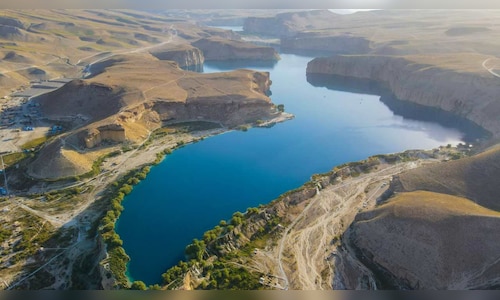Located in western Guangxi at the confluence of Guangxi, Yunnan and Guizhou provinces and sharing a southern border with Vietnam, Baise is known for its blend of natural scenery and rich cultural heritage. The city is home to some striking geological formations including sinkholes, canyons, waterfalls and lakes, while serving as a cultural meeting point for ethnic groups such as the Zhuang, Han, Yao and Miao.
Among Baise’s standout natural attractions are its world-renowned karst landscapes. The Leye Dashiwei Sinkhole Group, often described as the “World Sinkhole Museum”, offers panoramic views from the Yunhai Tianzhou Glass Observation Deck, as well as the option of cliff-top camping.
Also read | China warns domestic tourists against traveling to Japan amid Taiwan row
The Tongling Grand Canyon, an underground passage stretching 3.8 kilometres, is celebrated as “a beautiful scar on the earth”, and features the 188-metre-high Tongling Grand Waterfall. Visitors can also enjoy Lingyun Haokun Lake, where activities such as lakeside cycling, boat tours and stand-up paddleboarding are popular. Other scenic sites, including Chengbi Lake, Sandieling Waterfall and Goose Spring, continue to draw tourists throughout the year.
Baise’s multi-ethnic character is reflected in its abundant cultural traditions, spanning music, dance, drama, folk arts and craftsmanship. Major traditional festivals — including the Zhuang “March 3rd” Song Festival, the Miao Tiaopo Festival and the Yi Torch Festival — attract large numbers of participants. Jingxi, known as the “Hometown of Chinese Embroidery Balls”, preserves the intricate craft of embroidery balls, which symbolise friendship.
During the Tour of Guangxi Road Cycling World Tour in October 2025, Jingxi presented more than 300 specially crafted embroidery balls to international cyclists, bringing Zhuang culture to a global audience.
Also read | China extends visa-free entry to over 70 countries to draw tourists
Border-area tourism is another key feature of Baise. In the Napo Black-Clothes Zhuang Villages, residents continue the tradition of wearing elaborate black garments, while Debao County’s Pony Kingdom Scenic Area offers a family-friendly experience centred on the region’s distinctive Debao pony.
At border trade markets such as the Jingxi Longbang Port and Napo Pingmeng Port, tourists can purchase Vietnamese goods including coffee and cashew nuts. Visitors may also apply for a border tourism pass using their ID cards to cross into Vietnam, where they can sample local afternoon tea, wander among historic French-style architecture and enjoy the distinctive cross-border atmosphere.
Within Baise’s urban area, described as a city of “half green mountains and half water”, visitors can enjoy tranquil walks along the Youjiang River. By night, the Baise Night Market comes alive with its signature dishes: thin-skinned rice rolls, spicy stir-fried rice worms and refreshing locust flower jelly. Known nationwide as the “Hometown of Chinese Mangoes”, Baise also offers its renowned mangoes — celebrated for their rich aroma and distinctive sweetness — as an unmissable treat for travellers.
(Edited by : Jerome Anthony)
First Published: Nov 15, 2025 1:45 PM IST






